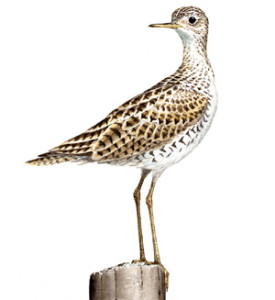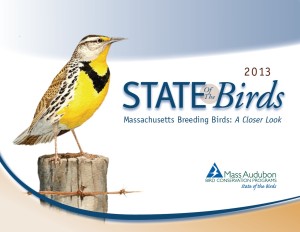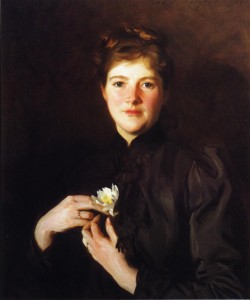Over the last 50 years, grassland birds have experienced steeper, more consistent, and more widespread population decline than any other avian group in North America. Have a look at the data we presented in Massachusetts State of the Birds 2013 to document this decline right here in the Bay State.
The main factors behind these declines are habitat loss and intensification in farming practices, and for some species losses on the wintering grounds are also of concern. Informed grassland management practices during the breeding season as well as during their wintering months are essential to these birds’ future success. Owners of open space meadows and agricultural land can make a real difference in protecting these species by implementing bird friendly management practices.
Mass Audubon has been busy developing outreach programs to help spread the word about how people can help these declining birds. During the summer of 2014 Liz Newlands, part of our Ecologic Extension Service team, got our regional grassland bird inventory off the ground. In August we hired our first Bird Conservation Fellow, Dr. Jon Atwood, to build a grassland bird program at Mass Audubon. By November, Lindall Kidd, a recent graduate from Oxford University, joined us to help fledge the program.
We are currently preparing brochures and pamphlets to update our work from the 1990’s, and to share basic guidelines for bird-friendly land management across the State. Along with those efforts we will begin an experimental program this summer designed to “lure” grassland birds into fields with delayed mowing schedules, thus eliminating the nesting loss due to mowing while the birds are still on nests.
We are also engaged in State-wide and region-wide inventories of grassland bird breeding sites with partners from Massachusetts DFW (see their grassland bird recovery plan here), Vermont Center for Ecostudies, the Maine Department of Inland Fisheries and Wildlife, New Hampshire Audubon, University of Delaware, and State agencies in Rhode Island and Connecticut
In addition, we are working with Mass Audubon’s Sanctuary Directors to look for ways to optimize grassland management practices on our own sanctuaries. We are planning an internal inventory of grasslands that will include a survey assessing our current resources and management practices, as well as looking at the barriers we might have for optimizing management, and opportunities for demonstrating best practices on our own land, and beyond.
Our objective with this work is to ensure that Mass Audubon leads by example in order to preserve Massachusetts agricultural landscape and the birds that inhabit it for future generations.





